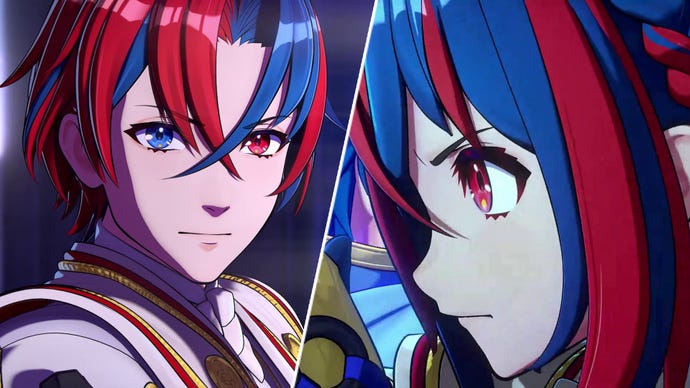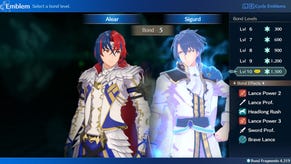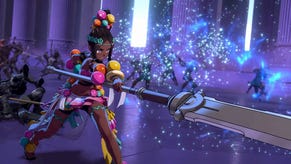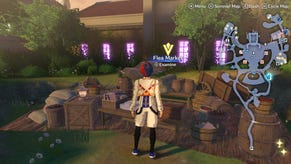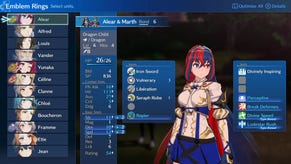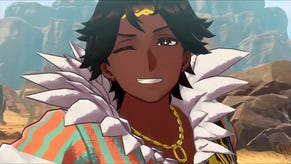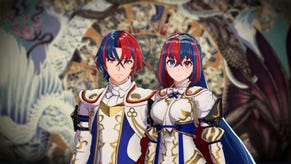Fire Emblem Engage is Three Houses turned up to 11, for better or worse – preview
If you're concerned about the Persona-fication of Fire Emblem, you might want to temper your expectations for Engage.
The task before Fire Emblem Engage is unenviable. The Fire Emblem series has experienced a meteoric rise – first with the fortune-reversing success of Awakening, which was conceived as the series’ final bow. Then a successful mobile game and Three Houses grew the series to new heights. Can Engage raise the bar even further?
It’s clear that developer Intelligent Systems and publisher Nintendo have a plan to do so. The plan, primarily, is to treat Fire Emblem’s past like blockbuster legend, mashing the old and new together with reckless abandon. The results are curious, and are likely to be divisive among older fans, but are sure to delight those who fell in love with Three Houses.
Over the holidays I’ve been able to play a huge chunk of Fire Emblem Engage towards a review, which you’ll be able to read in a few weeks. But, for now, I can talk to you a little about the earliest chapters of the game.
The core energy of Engage is offered up in the title, which is taken from this game’s new combat gimmick: the Engage system. This system basically allows players to summon the iconic heroes from past Fire Emblem games to assist them in battle as ghostly specters. While choosing to ‘Engage’ with that character, that Emblem (it all gets rather literal) allows the character they’re tied to and the Emblem to temporarily fuse, granting an enormous power-up.
.jpg?width=690&quality=70&format=jpg&auto=webp)
In real terms, this is just another mechanic; another ingredient in the fairly delicious layer cake that is any well-designed strategy RPG. In practice, however, it’s something more, and something most interesting: fanservice for a bunch of games a vast majority of the Western audience don’t actually remember. Priority has been given to those we know (those who found their Western fame through Smash and more recent games) but it’s nevertheless interesting. This isn’t an anniversary year – Fire Emblem turned 30 back in 2020 – but in some way Fire Emblem Engage feels like one of those anniversary celebrations.
Except it isn’t. It’s got that fanservice element, but what it’s really most interested in is doubling down on everything Three Houses did, which means an increased focus on a side of Fire Emblem that has only really emerged in the last couple of years.
.jpg?width=690&quality=70&format=jpg&auto=webp)
Fire Emblem has traditionally been a full-fat strategy RPG first and foremost, but with Awakening more and more elements of games like Persona and dating sims began to creep into the series. Many of these were always there to some small degree, but what began to shift was the focus of the game. Three Houses felt like almost two games fused together – a breezy dating and friendship sim RPG about a sort of anime sword and sorcery Hogwarts, and a crunchy tactical RPG with the toggles to give it brutally unforgiving difficulty.
This brought in a great number of new fans, but some of the strategy RPG hardcore felt this Persona-fication of Fire Emblem was diluting the series. If you were one of those people, Engage isn’t going to cure those ills. But that doesn’t mean it’s bad. In fact, if you enjoyed Three Houses, this isn’t just a little bit more of the same: it seems to be shaping up to be so much more of the same.
In fact, it definitely feels like the scales have been tipped again just a touch. While the start of the game is battle-heavy as it tutorializes the core Fire Emblem systems and a range of new additions, quickly enough you’ll find yourself on Somniel, a sort of floating island base of operations for the game. This is where you can bond with characters, raise pets, fishing – loads of stuff.
.jpg?width=690&quality=70&format=jpg&auto=webp)
You’re still flicking back to combat each chapter, of course, but much of the design feels geared towards allowing the character interactions to blossom. Instead of heading straight back to base at the close of every mission, you get to walk around and chat to the characters who’d fought at your side, as well as NPCs from the area of the world you’re in - a little debrief before heading home. It’s in these areas you can often find and adopt new pets or find much-needed materials, too. So the fighting is still there, but the downtime feels to have expanded slightly - even if some of that downtime is spent in menus juggling weapons, skills, and other RPG systems to prepare for the next battle.
.jpg?width=690&quality=70&format=jpg&auto=webp)
The Emblems are fully integrated into this, too. They’re not just personality-free ghosts. You’ll actually get to know the likes of Marth and Celica, where advancing your relationship will presumably provide fanservice about those characters and their histories, but also advance your options in combat. Meanwhile, you also have to juggle real-life, non-spectral relationships with a whole new cast of Fire Emblem heroes, with all that entails.
Basically, there’s a heck of a lot to do. It’s a kitchen sink approach which means this feels like an incredibly dense experience – and I definitely worry that might overwhelm some. In particular, those who took issue with Fire Emblem’s direction in some elements of Three Houses are doubtless going to find the technicolor character design, style, and tone of this game a little grating. For others, however, this is likely set to be the most packed and satisfying Fire Emblem to date.
The first few hours showcase a game that has the ability to be far more broad than its already packed-to-bursting predecessor – but we’ll have to see how that evolves over the coming hours and chapters. For that, you’ll have to wait for our review.
